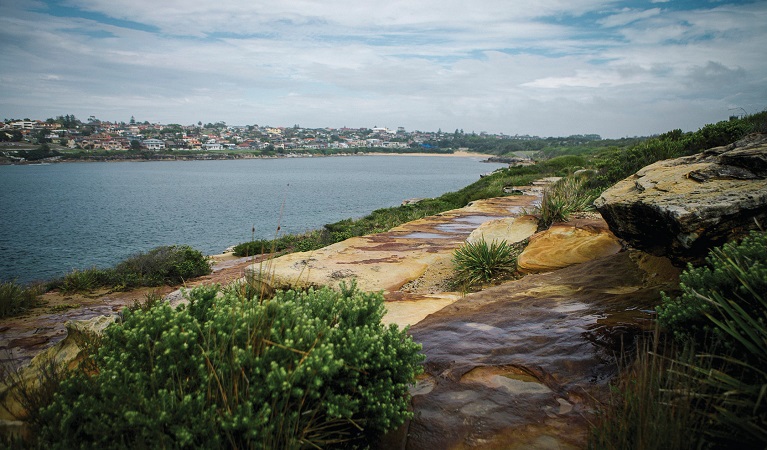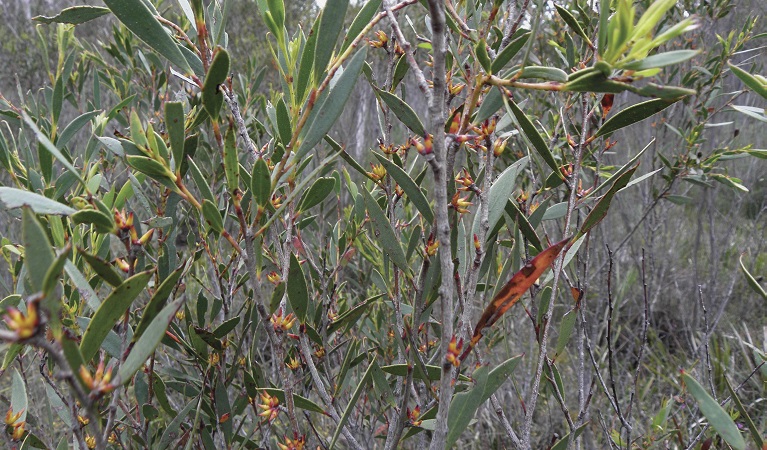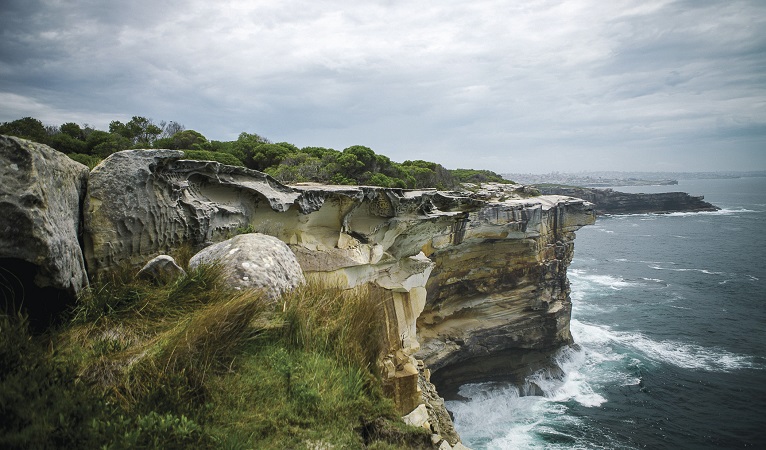Boora Point walking track
Malabar Headland National Park
Overview
Explore spectacular coastline views in Malabar Headland National Park on Boora Point walking track. Only 30 minutes from Sydney city, you’ll find epic sandstone cliffs, whale watching opportunities and swimming spots.
- Accessibility
- Hard
- Distance
- 3.7km one-way
- Time suggested
- 45min - 1hr
- Grade
- Grade 4
- Trip Intention Form
-
It's a good idea to let someone know where you're going. Fill in a trip intention form to send important details about your trip to your emergency contact.
- Opening times
This track is closed Saturdays, every 3rd Sunday of the month, and at other times when the ANZAC Rifle Range is in use.
- Please note
- Please check all safety messages and alerts before visiting. This track often closes at short notice to ensure public safety during ANZAC Rifle Range operations.
- Western Escarpment walking track is a great alternative when the eastern section of the park is closed.
Boora Point walking track is a hidden gem in Malabar Headland National Park. It's the perfect spot to escape the hustle and bustle of Sydney, spending a couple of hours immersed in nature.
With sweeping views up and down the coast, explore this track in whale season and keep your eyes peeled for humpback whales. You might even be lucky enough to spot the rarer southern right whale as they journey north to warm tropical waters. Both Boora Point and Magic Point provide many vantage points for viewing along the way, so don’t forget your binoculars. However, be sure to stay well back from the cliff edges.
If you're doing a return walk you can choose to hike back a different way by returning via Artillery track and checking out the historic gun emplacements and sandstone railway tracks.
After working up a sweat, you can cool off with a dip in Maroubra Beach or Malabar Beach at either end. You’ll find picnic tables and barbecues in Arthur Byrne Reserve at the northern end of the track, so why not bring lunch and make a day of it.
Also see
-

Artillery track
Artillery track is in Malabar Headland National Park along Boora Point walking track. Experience Sydney’s historic heritage and see the gun emplacements and rail tracks that formed part of the Malabar Battery.
Local alerts
For the latest updates on fires, closures and other alerts in this area, see https://uat.nswparks.cloud/things-to-do/walking-tracks/boora-point-walking-track/local-alerts
General enquiries
- National Parks Contact Centre
- 7am to 7pm daily
- 1300 072 757 (13000 PARKS) for the cost of a local call within Australia excluding mobiles
- parks.info@environment.nsw.gov.au
Park info
- in Malabar Headland National Park in the Sydney and surrounds region
Eastern section: Often closed because of the ANZAC rifle range operation. Closed every Saturday and every 1st and 3rd Sunday of the month. Check local alerts and safety messages before visiting.
Western section: Open all year but may close at times due to poor weather or fire danger.
Visitor info
All the practical information you need to know about Boora Point walking track.
Maps and downloads
Learn more
Boora Point walking track is in Malabar Headland National Park. Here are just some of the reasons why this park is special:
Ancient landscapes

Malabar Headland National Park is part of the traditional land of the Bidjigal and Gadigal People. Malabar Headland is a significant area (Bora Ground) for Aboriginal people. The word Bora is used throughout Eastern Australia to describe an initiation site or ceremony.
Plants a plenty

Alive with wildflowers in spring, Malabar Headland contains the last known population of the once extensive Port Jackson mallee in Sydney’s eastern suburbs. It’s also home to the eastern suburbs banksia scrub – one of the most critically endangered ecological communities in NSW. The park supports at least 7 distinct plant communities and this diversity of habitats is only matched in the eastern suburbs in Kamay Botany Bay National Park.
- Western Escarpment walking track Get back to nature on Western Escarpment walking track in Sydney's Malabar Headland National Park, near Maroubra. This short track through native heath boasts coastal views, bird life and wildflowers.
Dramatic cliffs

Malabar Headland is home to many of the pre-colonial landscapes that once occurred throughout the eastern suburbs. You’ll find coastal rock platforms, sea cliffs and headlands in the eastern section, and sandstone escarpments and remnants of aeolian sand dunes in the western section. These were believed to have been formed as a result of the last major glacial period.
Walk the coast

If you’re keen for a walk with never-ending ocean views as your backdrop, follow the rugged coastal cliffs along Boora Point walking track which links to the iconic eastern beaches coastal walk. During whale watching season, you might even spot a whale or two on their annual migration.
Plants and animals protected in this park
Animals
-

Common ringtail possum (Pseudocheirus peregrinus)
Commonly found in forests, woodlands and leafy gardens across eastern NSW, the Australian ringtail possum is a tree-dwelling marsupial. With a powerful tail perfectly adapted to grasp objects, it forages in trees for eucalypt leaves, flowers and fruit.
-

Eastern bentwing-bat (Miniopterus schreibersii oceanensis)
Eastern bentwing-bats congregate in caves across the east and north-west coasts of Australia, in colonies of up to 150,000. These small Australian animals weigh around 13-17g and can reach speeds of up to 50km per hour. Eastern bentwing-bats use both sight and echolocation to catch small insects mid-air.
-

Humpback whale (Megaptera novaeangliae)
The humpback whale has the longest migratory path of any mammal, travelling over 5000km from its summer feeding grounds in Antarctica to its breeding grounds in the subtropics. Its playful antics, such as body-rolling, breaching and pectoral slapping, are a spectacular sight for whale watchers in NSW national parks.
-

White-bellied sea eagle (Haliaeetus leucogaster)
White-bellied sea eagles can be easily identified by their white tail and dark grey wings. These raptors are often spotted cruising the coastal breezes throughout Australia, and make for some scenic bird watching. Powerful Australian birds of prey, they are known to mate for life, and return each year to the same nest to breed.
-

Yellow-tailed black cockatoo (Calyptorhynchus funereus)
The yellow-tailed black cockatoo is one of the largest species of parrot. With dusty-black plumage, they have a yellow tail and cheek patch. They’re easily spotted while bird watching, as they feed on seeds in native forests and pine plantations.

